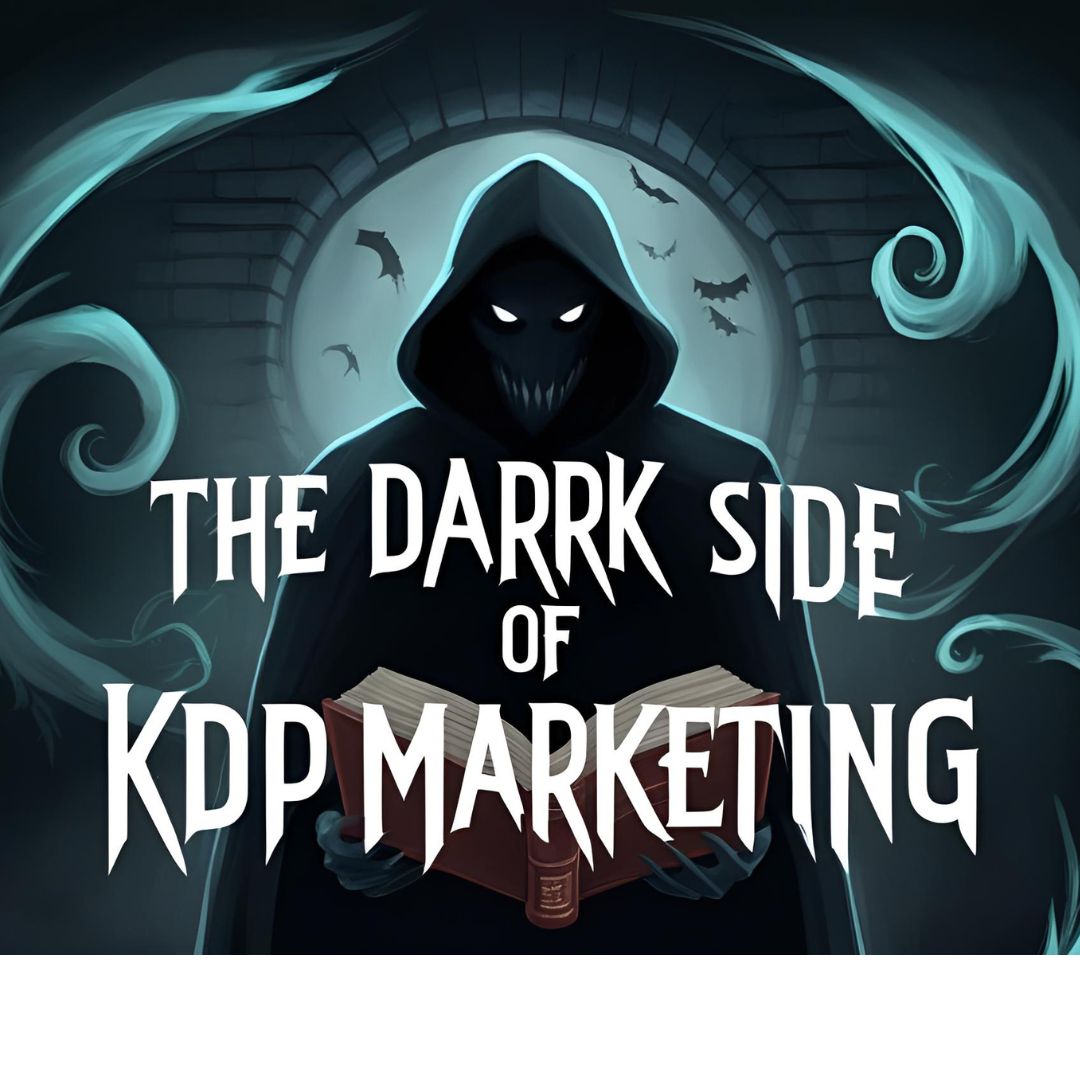Introduction
In recent years, Kindle Direct Publishing (KDP) has revolutionized the landscape of self-publishing, providing aspiring authors with an unprecedented platform for reaching audiences globally. The allure of KDP marketing lies in its promise of unlimited opportunities to achieve significant book sales, enabling authors to take control of their narratives while bypassing traditional publishing barriers. Authors are drawn to the convenience, creative freedom, and potential for financial success offered by this platform.
However, it is essential to consider the less glamorous aspects of KDP marketing that are often overlooked. Despite the fascination with potential profitability, many authors face hidden challenges that can hinder their success. Navigating the complexities of KDP marketing requires more than just uploading a manuscript; it demands a strategic approach, a solid understanding of marketing principles, and a willingness to adapt in a saturated market. Many self-publishers find themselves grappling with issues such as visibility, competition, and maintaining reader engagement, which can prove to be significant obstacles.
This article aims to provide an insightful exploration into the darker facets of KDP marketing, shedding light on the struggles authors encounter as they attempt to thrive in this landscape. Readers can expect to gain a comprehensive understanding of not only the advantages of KDP but also the intricacies of setting realistic expectations, developing effective marketing strategies, and overcoming common pitfalls. By uncovering the hidden challenges that authors frequently face, we hope to equip self-publishers with the knowledge necessary to navigate the KDP marketing maze successfully.
The Reality of Competition in KDP
Self-publishing through Kindle Direct Publishing (KDP) has democratized the publishing landscape, allowing countless authors to share their stories. However, this accessibility has created an overwhelmingly competitive environment. Currently, there are over 6 million e-books available on Amazon, with the number continually rising. This massive influx of titles means that authors, especially newcomers, face significant challenges in gaining visibility and achieving sales.
The saturation of the market varies by genre. For instance, in popular categories such as romance and thriller, there can be hundreds of thousands of titles vying for attention. According to data from KDP, romance alone has more than 1.5 million listings. This fierce competition means that standing out requires not only a well-crafted book but a solid marketing strategy. Without effective tactics, even the most compelling narratives can be lost in the shuffle.
Niche marketing becomes crucial in this crowded landscape. Authors should aim to identify and target specific sub-genres or audiences to carve out their unique space, as broad categorizations often fail to resonate in an oversaturated market. For example, rather than publishing in the general romance category, one might explore themes such as “historical romance set in World War II” or “paranormal romance featuring vampires.” This focused approach can attract a dedicated readership, improving both visibility and sales potential.
Real-world examples showcase the hurdles faced due to high competition on KDP. One notable case is that of a debut author whose book, while well-written, initially languished in obscurity due to general category listing. Upon reevaluating their marketing strategy and positioning the title within a specific niche, the author saw a significant increase in sales and engagement. Such stories underline the importance of understanding and navigating the competitive nature of KDP effectively.
Common Marketing Myths Debunked
Self-publishing via Kindle Direct Publishing (KDP) has become increasingly popular, yet there are numerous myths surrounding KDP marketing that can mislead aspiring authors. One prevalent misconception is that merely publishing a book guarantees sales. While it is true that publishing on Amazon can provide access to a vast audience, success requires more than just hitting the ‘publish’ button. Authors must engage in effective marketing strategies to promote their work and drive sales. Without a robust marketing plan, even the most well-written book can languish in obscurity.
Another common myth is the belief that social media is the only marketing tool needed for KDP success. While social media platforms like Facebook, Instagram, and Twitter can be effective for reaching potential readers, relying solely on these channels is shortsighted. Authors should consider a multifaceted marketing approach that includes email marketing, podcasts, book reviews, and even traditional media outreach. Each avenue presents unique opportunities to connect with readers and build a presence in the literary community.
Moreover, there is a perception that paid advertising is the best way to garner visibility for a new release. Although platforms such as Amazon Ads and Facebook Ads can be beneficial, they are not a guaranteed solution and require careful strategic planning to be effective. Authors should approach advertising with a clear understanding of their target audience and their book’s unique selling points. Implementing tools like SEO for metadata optimization and developing an engaging author website can also enhance discoverability without overt reliance on financial investment.
Ultimately, the journey to achieving sales through KDP requires more than just understanding these myths; it demands commitment to learning and implementing diverse marketing tactics. Engaging effectively in KDP marketing ensures that authors navigate the competitive landscape successfully.
Underestimating the Importance of Quality Content
In the realm of Kindle Direct Publishing (KDP) marketing, the impact of high-quality content cannot be overstated. Authors often assume that merely publishing more books will lead to greater visibility and sales. However, research indicates that quality content is a critical factor for a successful marketing strategy. Reports have shown that books with higher ratings and better reviews tend to maintain steady sales trajectories compared to those that lack adequate editing and formatting, leading to their neglect by potential readers.
The correlation between quality content and authors’ success stories is well-documented. For instance, a study conducted by Book Reviewers revealed that books receiving a score of four stars or higher increased their sales by an average of 56% in the subsequent months. This statistic highlights the necessity of providing well-crafted narratives, engaging character development, and meticulous formatting. Authors who invest time in refining their work often reap the rewards through increased visibility and visibility in the competitive KDP landscape.
Moreover, the pitfalls of rushing through the publishing process can have long-lasting effects on an author’s career. Many authors underestimate the importance of comprehensive editing and proofreading as they strive to meet publication deadlines. Substandard work can lead to a myriad of issues, including negative reviews and low sales, which can hinder an author’s reputation in the publishing community. Readers are likely to form opinions based on the presentation and quality of a book; hence, overlooking these crucial elements may ultimately reduce an author’s potential audience.
Thus, prioritizing high-quality content should be viewed not just as an option but as an essential aspect of a successful KDP marketing strategy. Ensuring that each book is polished and ready for reader consumption is a vital step toward achieving long-term success in the ever-evolving world of digital publishing.
The Cost of Advertising and Promotions
When authors utilize Kindle Direct Publishing (KDP) to distribute their work, advertising and promotions often form a critical component of their marketing strategy. However, the financial implications can be substantial. Common costs associated with KDP advertising include Amazon Ads, which can range from a few cents per click to several dollars, depending on factors like competition and targeting options. Additionally, promotions through services such as BookBub or Freebooksy can involve upfront costs that, while potentially yielding significant results, also pose financial risks, particularly for emerging authors with limited budgets.
The return on investment (ROI) for these promotional strategies can vary widely. For instance, while a well-placed ad might yield a spike in sales, the upfront costs can be daunting. Authors often report that high budget campaigns do not necessarily correlate to equally impressive sales figures. Data indicates that an author may spend anywhere from $500 to over $5,000 on a single campaign, which may or may not translate to significant revenue. A survey conducted by the Alliance of Independent Authors revealed that many authors struggle to break even on their advertising expenses, leading to questions about the sustainability of such investments.
Given the uncertain nature of paid promotions, authors may consider several alternatives. Organic marketing strategies, such as leveraging social media engagement, participating in online author communities, or utilizing book review exchanges, can be more cost-effective. These strategies often require more time and effort but can yield a loyal reader base without the immediate financial pressures of advertising. By balancing paid promotions with these alternatives, authors can navigate the complexities of KDP marketing more strategically, ensuring that their spending aligns with their overall financial goals.
Handling Negative Reviews and Feedback
Negative reviews and feedback can be a challenging aspect of an author’s journey, particularly in the context of Kindle Direct Publishing (KDP) marketing. The impact of negative reviews can extend beyond personal feelings; they can influence potential readers’ perceptions and, consequently, an author’s marketing strategies. An author may face the dilemma of whether to ignore criticism or to allow it to inform their future work. Constructively coping with such feedback requires a thoughtful approach.
One effective method for handling negative reviews is to analyze them objectively. Instead of viewing the feedback solely as a personal affront, authors can look for patterns or recurring themes that indicate areas needing improvement. For instance, if multiple readers comment on pacing issues, this may highlight a specific aspect of the storytelling that warrants revision. This constructive perspective can be transformative; negative feedback can serve as a valuable tool to enhance writing skills and marketing strategies.
Responding to reviews is another critical component in managing criticism. While some feedback may warrant a personal response, it is often advisable to maintain professionalism. Authors should thank reviewers for their insights, even if the feedback is harsh. This approach not only demonstrates maturity but may help future readers perceive the author as engaged and open to improvement. For example, a well-known author who received negative reviews for the pacing in their first novel extensively revised their subsequent works based on reader feedback, leading to a significant increase in positive receptions.
Ultimately, embracing constructive criticism and leveraging negative reviews can lead to growth both personally and professionally. By treating feedback as an opportunity rather than a setback, authors can enrich their writing, establish more effective marketing strategies, and build a stronger bond with their audience. It is through these challenges that many successful authors have transformed adversities into stepping stones for improvement.
Navigating Amazon’s Algorithms and Updates
Understanding and adapting to Amazon’s algorithms is vital for any author looking to maximize the effectiveness of their KDP marketing efforts. Amazon’s ranking factors and algorithms determine how books are displayed in search results, influencing visibility and sales. Consequently, authors must stay informed about recent updates to KDP policies and algorithms. The company frequently revises its algorithms to improve user experience, leading to changes in how content is indexed and ranked. As such, authors must be proactive in adjusting their marketing strategies accordingly.
Recent observing trends suggest that keywords play an increasingly crucial role in how books are discovered. Choosing the right combination of keywords not only enhances discoverability but also aligns listings with the current algorithm criteria. Authors should conduct frequent keyword research, utilize tools such as KDP Rocket or Publisher Rocket, and analyze competitors in their genre to identify effective keywords. Additionally, ensuring that these keywords are seamlessly integrated into titles, subtitles, and book descriptions can significantly impact rankings.
Engagement metrics are another critical aspect that the algorithms consider when ranking books. This includes factors such as the number of reviews, average ratings, and sales trends over time. Therefore, authors should prioritize gathering genuine reviews and ensuring they provide quality content to retain reader satisfaction. Engaging with readers through social media platforms can also enhance an author’s presence and encourage interactions that positively affect ranking.
Staying updated with Amazon’s policy changes is equally important. Authors should regularly check the KDP community forums and official Amazon announcements to remain informed about possible changes in algorithms and marketing strategies. By proactively refining their approach to Amazon’s algorithms and understanding the intricacies of KDP marketing, authors can navigate the complexities of the platform and enhance their overall book visibility.
Building an Author Brand Beyond KDP
Establishing a strong author brand is essential for any writer aiming for success in today’s competitive publishing environment, particularly beyond platforms like Kindle Direct Publishing (KDP). An effective author brand serves not only as a distinctive identity but also as a powerful marketing tool that can foster a loyal readership and provide numerous cross-promotional opportunities. A well-defined brand conveys to readers the essence of the author’s work, values, and personality, making it easier for them to connect on a deeper level.
Successful authors such as J.K. Rowling and Neil Gaiman exemplify how personal branding can significantly enhance visibility and readership. Rowling, for instance, has transformed her Harry Potter franchise into a global phenomenon, demonstrating the power of a cohesive brand that includes books, films, and even theme parks. Gaiman often engages his readers through social media, sharing personal anecdotes and insights into his writing process that resonate with his audience. This approach not only reinforces his brand but also cultivates an engaged community.
Another key aspect of building an author brand is leveraging social proof, which involves showcasing testimonials, reviews, and endorsements from readers and other influential figures. This phenomenon bolsters credibility and encourages new readers to explore an author’s work. Additionally, authors can adopt various personal marketing strategies, including newsletters, blogs, and online events, which help maintain a dialogue with their audience and reinforce their brand identity over time.
Ultimately, constructing a resilient author brand requires consistent effort and genuine interaction with readers. By prioritizing their brand development, authors can create a lasting impact, paving the way for sustained growth in followers and book sales, irrespective of the limitations imposed by platforms like KDP. Through strategic branding, writers can position themselves for greater opportunities, ensuring their voices are heard well beyond the confines of online marketplaces.
Conclusion
As we have explored throughout this post, the world of Kindle Direct Publishing (KDP) marketing is not without its challenges. While many authors are drawn to the potential for exposure and revenue, the hidden difficulties associated with KDP marketing can often overshadow those initial benefits. It is essential for authors to be aware of these complexities to navigate the self-publishing landscape successfully.
One of the critical takeaways is the importance of understanding the algorithms and dynamics of Amazon’s marketplace. An effective KDP marketing strategy necessitates continuous adaptation to these changes, as they can significantly influence a book’s visibility and sales. Authors must also consider their target audience and tailor their marketing efforts appropriately, recognizing that what works for one genre may not be as effective for another.
Additionally, the reliance on promotional tools, such as discounts and free days, may create unsustainable expectations for future sales. Authors should be cautious of over-relying on these tactics, as they can degrade perceived value and affect long-term profitability. Establishing a solid author brand and maintaining consistent engagement with readers can be more beneficial approaches in the long run.
In light of these considerations, we encourage authors to critically reassess their KDP marketing strategies. Engaging with communities of fellow writers and readers can provide valuable insights and recommendations. Moreover, sharing experiences and strategies enhances not just individual practices, but also collective understanding across the KDP platform.
We invite you to participate in this discussion. Share your thoughts, experiences, or questions related to KDP marketing in the comments section or connect with us on social media. Your perspectives can help foster a vibrant community dialogue and possibly uncover even more strategies for success in the challenging world of self-publishing.




